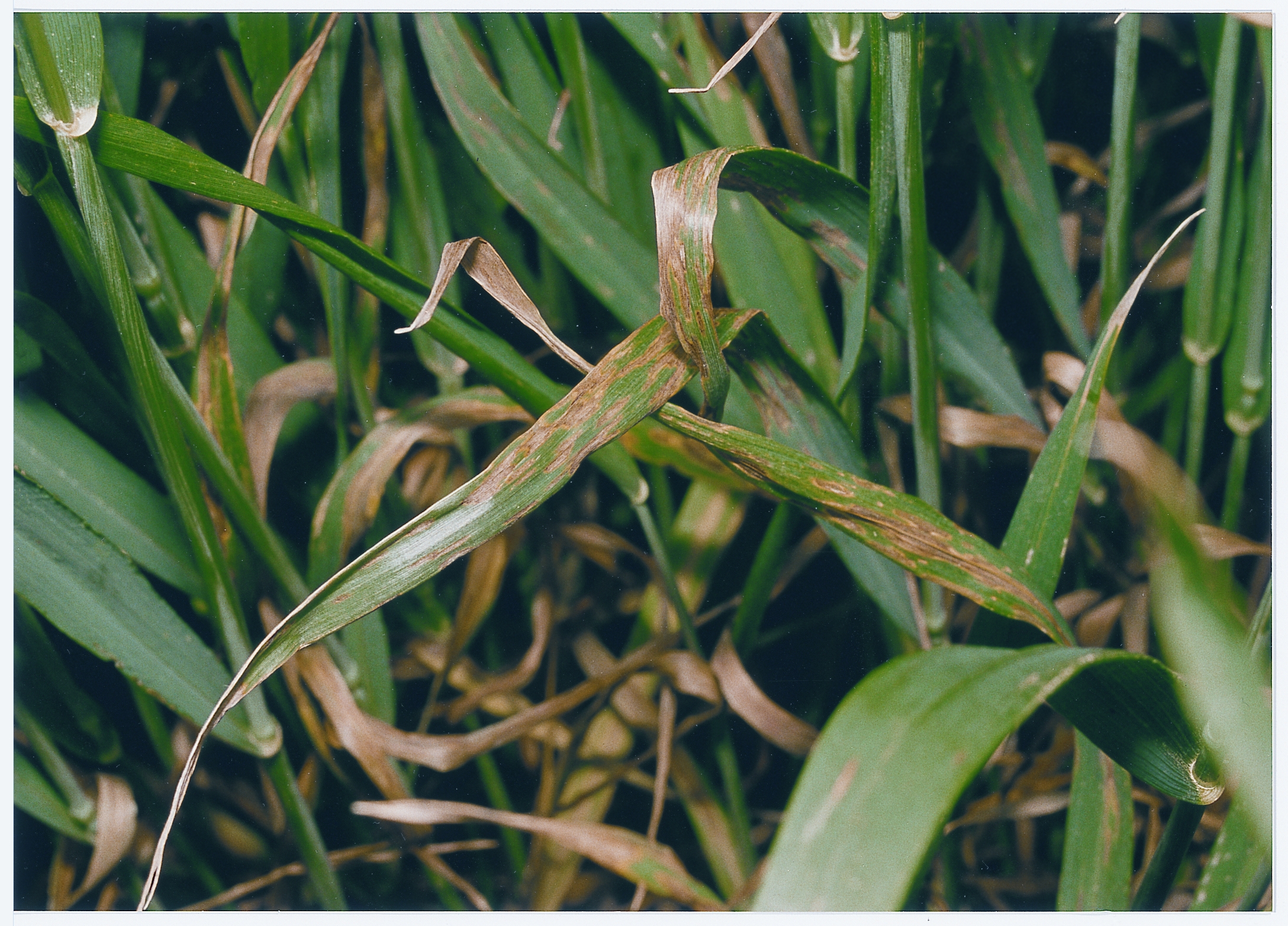There’s a school of thought that suggests leaf-layering may prove a useful strategy to reduce reliance on the curative activity of fungicides. CPM looks at the rationale behind it.
By Lucy de la Pasture
Timings may well be a little off-kilter this spring, with a backload of fieldwork and growth stages all over the place after a late start to spring. It’s worth considering a T1.5 treatment as a strategy in some circumstances to help ensure leaf two is protected against septoria, suggests Andy Bailey, fungicide technical specialist for Adama.
He advises the most effective way to control septoria is to prevent infection from occurring in the first place. “This means ensuring each newly emerged leaf is protected prior to the first infection period. That means before the first spores land on the leaf and germinate,” he explains.

Andy Bailey believes protecting leaf two with a multi-site is a useful strategy in high-risk septoria situations.
“While leaf three and the flag leaf (leaf one) are routinely protected with well-timed applications at T1 and T2, leaf two often goes unprotected at its emergence, with growers relying on the subsequent T2 application to give kickback curative activity against any existing latent infection. This puts leaf two at significant risk of the infection progressing beyond chemical control, especially if the T2 application is delayed,” he says.
Leaf Layering
And that’s where the concept of ‘Leaf Layering’ (applying protection to each new leaf as it emerges) comes in. It provides a way of ensuring optimum protection of ‘at risk’ crops, such as those which were drilled early, are a septoria susceptible variety or located in areas particularly prone to septoria infection.
To fully protect leaf two means applying a T1.5 treatment at GS33 to treat the fully emerged leaf, believes Andy. “The first choice of active ingredient for any T1.5 treatment where septoria is the driver should be a multi-site such as folpet. A multi-site will provide good levels of contact protection against septoria and can be mixed with a strobilurin to protect against the threat of rust, or an azole/morpholine if active rust is present,” he advises.
Selection pressure
There’s more behind the leaf-layering strategy than just protection of the leaf not present at the standard T1 fungicide timing. In addition to providing good control of septoria and offering activity against rust, folpet also takes septoria selection pressure off the azoles and SDHIs, explains Andy.
“Like other multi-site fungicides, folpet affects several different metabolic sites within a pathogen. This gives it a very low risk of resistance. Modelling work predicts that adding it to the fungicide tank-mix could theoretically extend the fully effective lifetime of medium to high risk fungicides,” he says

Latent septoria infection on leaf two can increase reliance on the curative activity of fungicides.
Illustrating the point, Andy highlights that, according to the model, the fully effective lifetime of epoxiconazole could have been extended from eight to 16 years, with the lifetime of pyraclostrobin prolonged from four to eight years,” he says.
Field trials and septoria strain analyses conducted in 2014 also showed where folpet is added to an azole then the mixture stopped the selection of resistant septoria strains, preventing any further slippage in fungicide performance. Similar results were also seen in 2015 trials carried out on SDHIs, says Andy.
Curative activity
With the curative activity of azoles already under pressure, leaf layering could reduce the risks associated with allowing septoria to get away. “With the current arsenal of fungicides having a reduced curative capacity this will not only ensure the crop remains cleaner for longer, but it’ll also take the pressure off subsequent application timings,” he comments.
Comparison of azole performance on latent septoria infection between 2005 and 2016 highlights that curative activity remained strong (80-90%) until half-way through the latent period (10 days after infection) but by 2016, this had reduced to 35% at best and quickly declined during the latent period.
“By using a leaf layering strategy, it removes the reliance on curative activity from T2 applications, which has to come into play to control any latent infection present at the time of application,” he adds.
Antagonistic effect
With the addition of a multi-site at T1 and T2 recommended as part of an anti-resistance strategy, one of the quandaries facing agronomists is the antagonistic effect of chlorothalonil on uptake of partner products, especially important when curative activity is required. Folpet avoids this, explains Andy.
“Folpet has been proven not to interfere with the curative kickback activity of partner azoles or SDHIs. By applying a multi-site at T1.5, it will ensure the newly emerged leaf two is protected from septoria infection,” he says.
“In trials, only 45% of epoxiconazole applied was absorbed by the plant tissue after 10 hours when it was mixed with chlorothalonil. No further uptake took place after this time. In comparison, 55% of epoxiconazole was absorbed after 10 hours when it was mixed with folpet and uptake continued to take place, reaching 70% after 25 hours,” he says.




